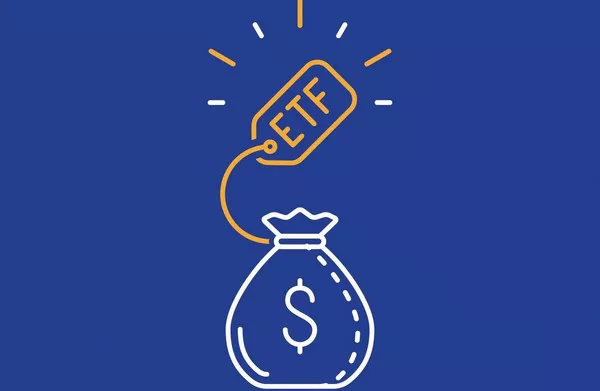In the realm of investment opportunities, exchange-traded funds (ETFs) have been gaining significant popularity in recent years. These financial instruments offer investors an alternative to traditional mutual funds. However, many people still wonder: Are ETFs simply mutual funds in disguise? To shed light on this question, let us delve into the world of ETFs and mutual funds and explore their similarities and differences.
1. Understanding ETFs
ETFs: An Overview
Exchange-traded funds are investment vehicles that trade on stock exchanges, similar to individual stocks. They are designed to track the performance of a specific index, sector, or asset class. ETFs offer investors diversification and flexibility, enabling them to gain exposure to a wide range of securities without having to purchase each individual security separately.
Subtle Distinctions
ETFs possess a unique feature known as “intraday trading.” Unlike mutual funds, which are only priced once a day, ETFs can be bought and sold throughout the trading day at market prices. Additionally, ETFs generally have lower expense ratios compared to mutual funds, making them an attractive option for cost-conscious investors.
2. Unveiling Mutual Funds
Mutual Funds: An Overview
Mutual funds, on the other hand, are collective investment vehicles that pool money from various investors to invest in a diversified portfolio of securities, such as stocks, bonds, or a combination of both. They are managed by professional fund managers who make investment decisions on behalf of the investors.
Operational Mechanics
Unlike ETFs, mutual funds are priced at the end of each trading day, based on the net asset value (NAV) of the underlying securities held in the fund. Investors can buy or redeem mutual fund shares directly from the fund company at the NAV price, which is calculated by dividing the total value of the fund’s assets by the number of outstanding shares.
3. Similarities and Differences
Portfolio Diversification
Both ETFs and mutual funds offer investors the advantage of portfolio diversification. By investing in a single ETF or mutual fund, individuals can gain exposure to a broad range of assets, reducing their overall risk compared to investing in individual stocks or bonds.
Management Style
While mutual funds are actively managed by professional fund managers, ETFs are typically passively managed, aiming to replicate the performance of a specific index. Passively managed ETFs aim to minimize transaction costs and seek to match the index’s performance rather than outperforming it.
Transparency and Costs
Both investment vehicles provide investors with transparency regarding their holdings. Mutual funds disclose their holdings on a monthly or quarterly basis, while ETFs disclose their holdings on a daily basis. In terms of costs, ETFs generally have lower expense ratios due to their passive management style and lower transaction costs associated with intraday trading.
4. Advantages and Disadvantages
ETF Advantages
One of the key advantages of ETFs is their liquidity. As they trade on stock exchanges, investors can buy or sell ETF shares at any time during market hours. Additionally, ETFs offer investors tax efficiency by minimizing capital gains distributions compared to mutual funds. Moreover, the ability to trade ETFs at market prices throughout the day provides investors with greater flexibility and control over their investment decisions.
ETF Disadvantages
Despite their advantages, ETFs may not be suitable for all investors. The intraday trading feature can lead to increased volatility, which may be a concern for risk-averse investors. Additionally, while passive management reduces expenses, it also means that ETFs may not generate returns higher than the index they track.
Mutual Fund Advantages
Mutual funds, being actively managed, may have higher potential for outperforming the market. Skilled fund managers can make investment decisions based on market conditions, potentially leading to better returns for investors. Mutual funds also offer the convenience of automatic investment plans and systematic withdrawal options, allowing investors to contribute or withdraw funds regularly.
Mutual Fund Disadvantages
One significant drawback of mutual funds is their higher expense ratios compared to ETFs. The fees associated with actively managed funds can eat into investors’ returns over time. Additionally, mutual funds are subject to capital gains tax when fund managers sell securities within the portfolio, potentially leading to tax implications for investors.
5. Choosing Between ETFs and Mutual Funds
Investor Considerations
When deciding between ETFs and mutual funds, several factors come into play. Investors must consider their investment goals, risk tolerance, and time horizon. If an investor seeks a low-cost, tax-efficient, and easily tradable option that tracks an index, an ETF may be a suitable choice. On the other hand, if an investor prefers active management, the potential for outperformance, and the convenience of automatic investment plans, a mutual fund might be more appropriate.
Combining Both Strategies
It’s worth noting that investors can also employ a combination of ETFs and mutual funds in their investment portfolios. This approach allows for diversification across asset classes and investment strategies while leveraging the benefits of both types of funds.
Conclusion
In conclusion, while ETFs and mutual funds share some similarities, they have distinct characteristics that set them apart. ETFs offer intraday trading, lower expense ratios, and passive management, while mutual funds provide active management and the potential for outperformance. The choice between the two ultimately depends on individual investors’ preferences, investment goals, and risk tolerance.
As the investment landscape continues to evolve, understanding the differences between ETFs and mutual funds becomes crucial for making informed investment decisions. By weighing the advantages and disadvantages of each option, investors can align their investment strategies with their financial objectives, ensuring a well-rounded and diversified portfolio.


